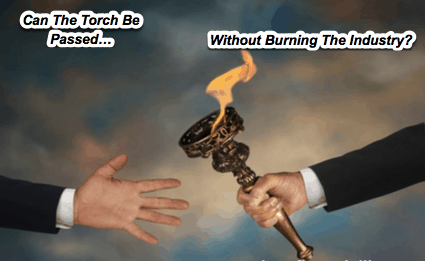
The battle between the office of Ohio Governor John Kasich and the Ohio Manufactured Homes Association (OMHA) over the Ohio Manufactured Housing Commission (OMHC), shined a bright light on a large, ongoing challenge related to the industry and terminology.
When you type “mobile home fires” into Google, you get over 3 million entries, perhaps spanning the life of the internet. These include studies on causation, injuries, deaths, dollars, etc. — not just the fires alone.
Those millions of stories provide one of the striking reasons why the public impression about ‘mobile homes’ is so poor. Years of media accounts about mobile homes burning are seared into the public’s minds.

Conflating fire risks in pre-HUD Code mobile homes with manufactured homes

are one of several possible examples of what Marty Lavin, JD – industry communities, retail and finance veteran – calls “the other industry image campaign.”
That negative stereotypes mainstream media “campaign” is waged by locals – who for whatever reasons – fail to report information accurately.
That in turn naturally spills over into the public’s impression of manufactured homes.
While the public is clamoring for affordable housing – and the need is in the tens of billions annually – it seems that fears about fires are among the reasons they don’t turn to manufactured homes more often as their solution.
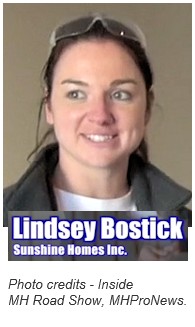
The challenge is, that millions seeking housing just don’t consider it. Per Zillow’s survey, half that do, buy.
Fire-Heated Questions
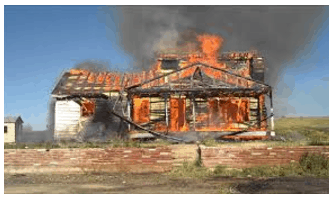
it does. Image credit: YouTube still.
The “burning question” is how many of these fires occurred in pre-HUD Code homes, and how many in manufactured homes?
Surprisingly, the exact answer is not known. But the reason that it’s unknown is sadly clear.
Many if not most news reports do not distinguish between mobile and manufactured homes. The absence of that distinction – and poor use of terminology in other stories – thus feeds into a myth that continues to plague the contemporary manufactured housing industry.
That in turn leads millions to incorrectly believe that all factory-built homes have the same old (high) risk of fire that mobile homes built 40 years ago did.
The Daily Business News has periodically pointed out the facts versus myths surrounding manufactured homes and fires, noting that homes built under post-1976 federal regulations have a somewhat lower fire rates than a traditional, site-built house.
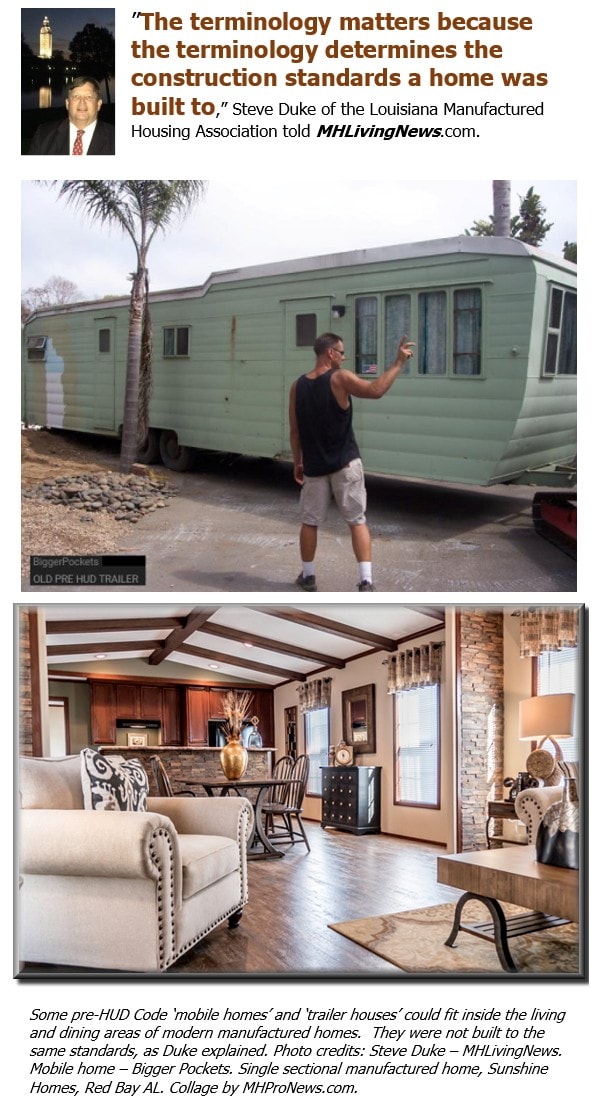
An Example of The Impact on the MH Industry
As noted, Ohio is an example where poor information created industry challenges, because the opposition claims run counter to the facts.
The Ohio Fire Chief’s Association’s letter to lawmakers in March supported a provision in the state budget to kill the Ohio Manufactured Home Commission (OMHC), proposing to roll its functions into the Ohio Department of Commerce.
The Daily Business News covered the response from the commission in a story, linked here.
“30 people died in 1,208 manufactured home fires between 2012 and 2016,” said the letter from the fire chief’s association.
“Ohioans are 4.2 times more likely to die in a manufactured home that caught fire than one- or two-family home.”
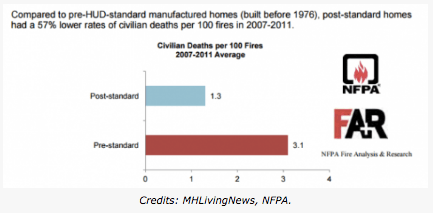
But that statement by the fire chief’s association was inaccurate, as a National Fire Protection Association (NFPA) study reflected.
The NFPA also carefully noted the proper and improper use of nomenclature, see that graphic below.

Ohio Manufactured Home Association (OMHA) Executive Director Tim Williams and Association of Manufactured Home Residents in Ohio (AMHRO) President Frank Pojman joined forces to point out the facts to their legislators.
That “teaming up” is critical, because arguably home owners’ property values are negatively impacted by the impression that manufactured homes burn and kill, a mistaken notion spread by problematic media reports.
“The administration is spreading false information and misleading information because the commission is pushing back against Kasich’s proposal,” said Williams.
The OMHC also conducts inspections of all new and previously owned manufactured home installations, resulting in less than 10 complaints in the last three years.
By comparison, 23,000 home installations have occurred in the last decade, and prior to the Commission’s existence 500-800 improper home installation complaints occurred annually.
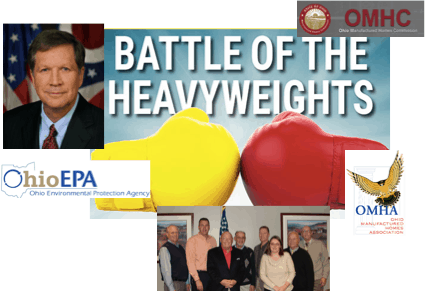
“I urge any of your Committee to review agendas and minutes of the MH Commission meetings, to see the all-important issues that are discussed, for the benefits and safety of manufactured homeowners,” said Pojman during recent testimony.
Terminology Matters
In a recent story on the differences between mobile and manufactured homes, MHProNews asked Urbana, Ohio Fire Chief Mark Keller to clarify details on a recent home fire reported in his town.
“This fire involved a true mobile home and was not a manufactured home. I do not have the age of the mobile home available right now,” Urbana Fire Chief Mark Keller told MHProNews.
“Mobile homes are inherently bad with fire conditions. They’re not really designed to withhold any kind of fire.”
Chief Keller was specific, because MHProNews directly inquired about the facts of the case, which allowed MHLivingNews to properly represent the facts of that sad incident. But how can doing that correct-the-record once or occasionally be enough in the face of the thousands of such stories being reported a year?
Thus, Kovach argues that it responding to misleading media accounts must become the routine. When both MHI and MHARR have said that the industry ought to be doing hundreds of thousands of new home shipments a year, the value of correctly the record should be clear.
Sloppy Journalism?
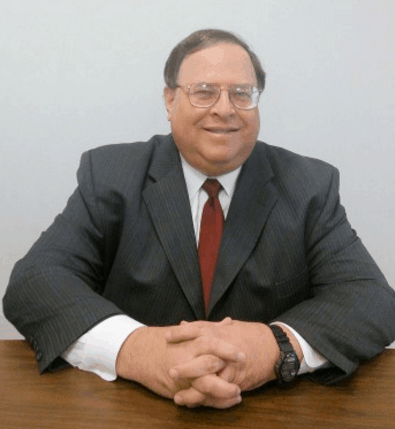
“While any harm to people or property is regrettable, there is no excuse for sloppy journalism that can harm the industry and consumers. The fact is that today’s federally regulated manufactured homes are as safe or safer than other types of homes when it comes to fire, as shown by research done by the National Fire Protection Association on multiple fire safety metrics,” said Mark Weiss, JD, President CEO of MHARR.
“It is therefore misleading and a disservice to readers to fail to distinguish between pre-1976 ‘mobile homes,’ said Weiss, “and today’s manufactured homes. This is why MHARR successfully demanded several years ago that the U.S. Fire Administration remove similarly misleading language from it’s website.”
“The industry and consumers need to insist on an accurate media portrayal of today’s high-quality manufactured homes,” said Weiss.

“As an Industry, we are always saddened to hear of such tragedies such as the fire that occurred in Champaign County,” said OMHA Assistant Director Andrea Reichman, commenting on the Urbana fire story.
“As noted by the local Fire Chief Mark Keller, the home involved was a ‘mobile home,’ which indicates the home was built prior to the 1976 HUD Code Federal Manufactured Home Construction and Safety Standards,” Reichman said.
“Often times such incidents are reported inaccurately, and facilitate the image that manufactured homes are not safe when nothing could be further from the truth. Manufactured homes are no more prone to fire than homes built on-site. The 1986 national fire safety study by the Foremost Insurance Company showed that site-built homes are more than twice as likely to experience a fire than manufactured homes,” said Reichman.
Their association’s latest call to action is linked as a download, click here.
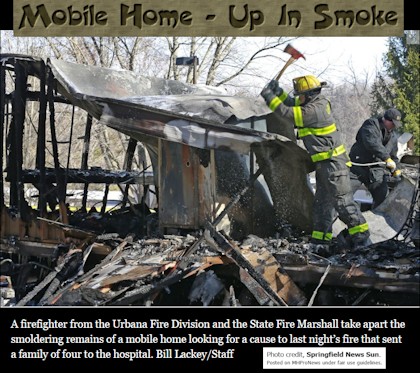
The Question Remains
The “burning question,” is how does the manufactured housing industry change the commonly perceived notion that all factory-built homes are the same?
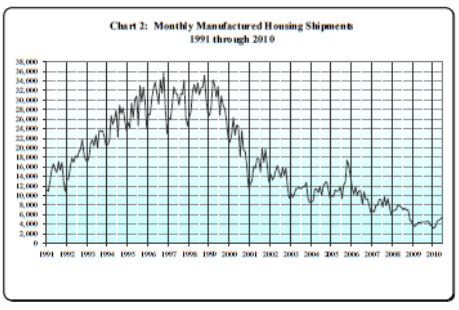
“What clearly won’t work,” says publisher and consultant, L. A. ‘Tony’ Kovach “is doing nothing. All too often – for decades – the industry has routinely taken the tactic of ignoring the bad news, hoping it will eventually fade away.”
“A glance at industry shipments today compared to 15, 20 or 25 years ago proves that while we’ve advanced from the great recessions’ bottom,” said Kovach, “we’re nowhere near our industry’s historic percentage of new construction starts. The steady drip, drip, drip, of what Marty Lavin and others call the ‘other image campaign’ persists. So, we as professionals must become resolute in responding routinely too.”
“Engaging the media is one part of the solution,” Kovach says. “Many editors are willing to make corrections when a story has a fact error. We as trade media are and can be part of education and solution. But that also requires engagement and support from members of the industry.”
“It’s Education”
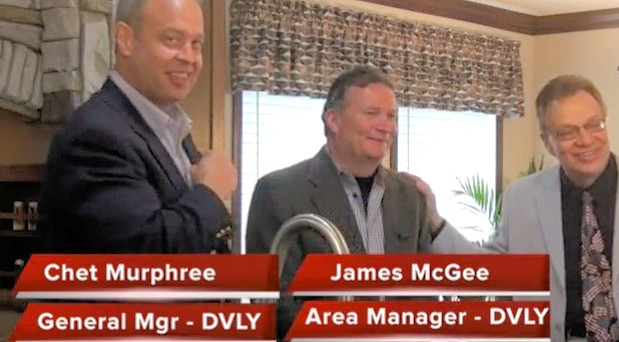
“I want to thank you for what you do for this industry,” said James McGee of Deer Valley Homebuilders. “We’ve kind of zeroed around about what’s important. It’s education. I want to say, Tony, thank you for spearheading that. You’re an incredible guy, and our industry’s very lucky to have you.”
Chet Murphree echoed McGee’s comments, with “Absolutely.”
Kovach in turn routinely reminds people that without their writing and video team, supporters and sponsors, the news and educational efforts would not be possible. “It has to be about mutual effort – team work – that goes to the grass roots, at the local and regional levels,” he said. “It isn’t about mountains of cash. It’s about a wise use of time, talent and resources in responding and educating as needed.”
“As the myths and fears fade, we know from experience more customers come, see, are impressed with the value, and buy.”
Ohio is an example of where the state and both national associations – along with MHLivingNews, MHProNews – plus engaged industry members – acting in conjunction with home owners – all provided comments and made efforts to correct-the-record. As we recently reported, the outlook there is hopeful as a result.
Programming Note
With the launch of MHProNews’ newly updated home page and website, the Daily Business News will take a look in the coming days at a variety of issues that are holding our industry back from achieving and exceeding its historic potential.
Because as the myths and misconceptions subside, the sale of manufactured should skyrocket as the surprising private sector answer to the affordable housing crisis. As McGee said, “It’s education.”
For more on manufactured housing being the affordable housing solution that’s hiding in plain sight, see the reports on the page, linked here. ##
(Image credits are as shown above, and when provided by third parties, are shared under fair use guidelines.)


























